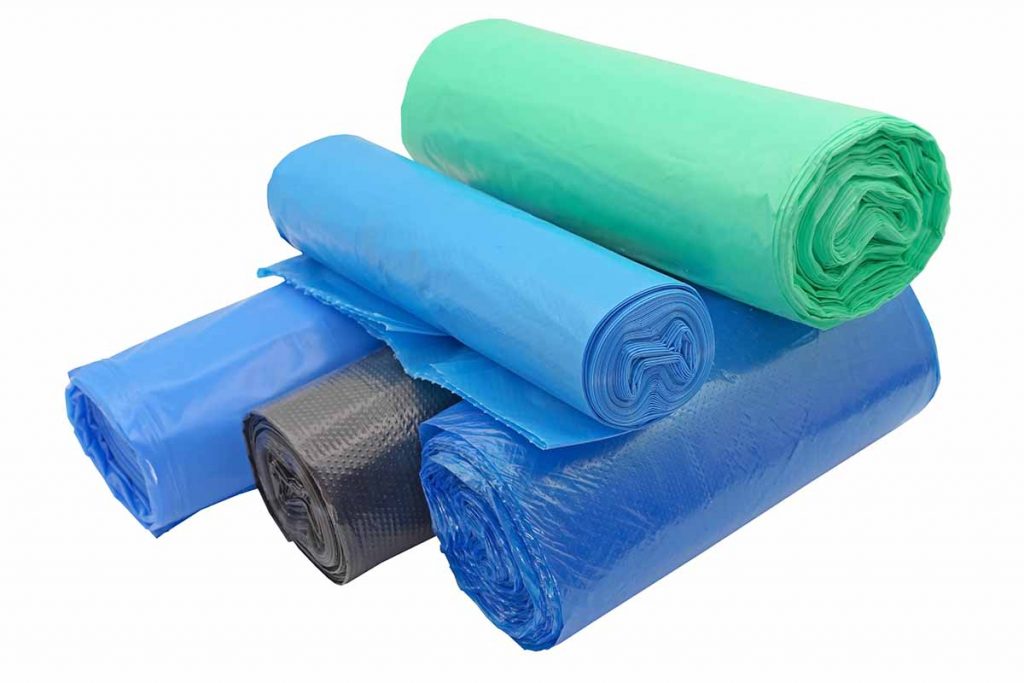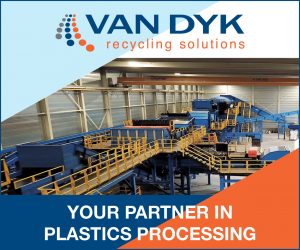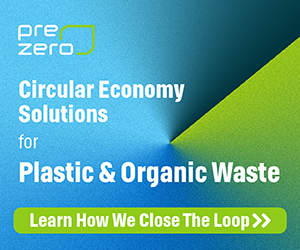
Novolex reported an increase in weight of post-consumer recycled plastic used in the company’s products for 2021, though the number did not rise as a percentage of total resin used. | a_v_d/Shutterstock
Bag manufacturer Novolex increased the amount of PCR it bought in 2021, but PCR remained just 4% of overall plastic feedstock purchased.
According to the company’s most recent sustainability report, in 2021 about 4% of the company’s overall feedstock purchases consisted of PCR, while 24% was post-industrial, 2% bio-based and 70% virgin. That’s more post-industrial feedstock compared to 2020 and 2019, when 4% of purchases were PCR, 20% post-industrial and 76% virgin.
“Total pounds of PCR resin grew in 2021. However, that growth was not enough to change our reported percentage (4%) as a total share of resin sourcing volume,” the report stated. “To support growth in utilization of PCR, Novolex is investing millions in additional capacity in our recycling facilities, and also launching new initiatives focused on driving demand for PCR with our customers.”
Overall, the company also used more renewable, bio-based and PCR materials by weight in 2021, but the percentage share of these raw materials decreased from 49% in 2020 to 48% in 2021.
“This occurred despite acquisitions of Vegware and Flexo converters, which use primarily renewable and bio-based resin raw materials,” the report noted. “The reduction reflects growth in our other business units, such as our resin-based institutional can liner business, which returned to pre-pandemic levels as offices, arenas and other institutions reopened.”
To address these declining shares of overall material use, Novolex put facility incentives in place to minimize manufacturing waste and for the second year is investing in capacity to recycle store drop-off films and post-industrial plastics at its North Vernon, Ind. recycling facility.
“Over the past decade, Novolex has invested in and installed multiple internal recycling lines that capture, reprocess and reuse post-industrial material,” according to the report. “As a result, we have made significant progress capturing engineered waste so it can be reused in the manufacturing process and reduce reliance on virgin content.”
Novolex did increase the percentage of recycled paper it used in 2021, up 2 percentage points over 2020 and 5 percentage points over 2019. In 2021, it used 51% post-consumer fiber, compared to 49% in 2020 and 46% in 2019.
“This progress is driven by product innovation as well as acquisitions of fiber-based companies, leveraging our supply chain to increase post-consumer raw material used in these newly acquired facilities,” the report noted. “Where the use of virgin fiber is necessary, we focus on procuring chain-of-custody certified content.”
More stories about brand owners
- Retailers launch CA campaign to ditch single-use bags
- New report explores the future of CPG packaging goals
- Unifi pushes for textile recycling progress



